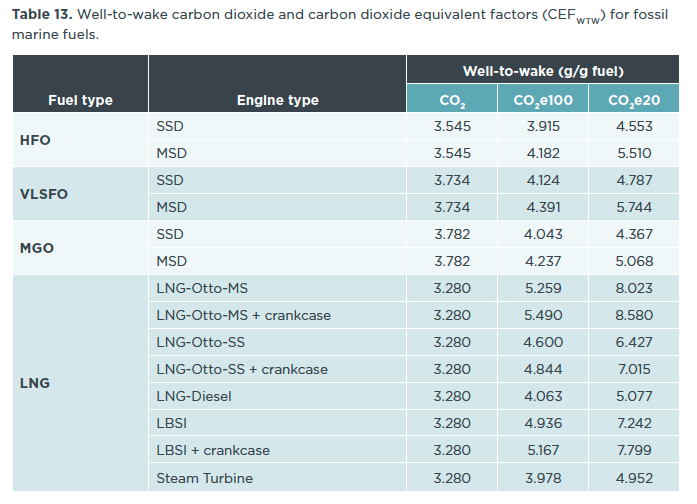Potential CO2 reductions under the Energy Efficiency Existing Ship Index
Briefing
Accounting for well-to-wake carbon dioxide equivalent emissions in maritime transportation climate policies
This briefing paper outlines a methodology for calculating well-to-wake CO2-equivalent emissions from four fossil marine fuels: heavy fuel oil, very low sulfur fuel oil, marine gas oil, and liquefied natural gas. Well-to-wake emissions, or life-cycle emissions, are the sum of upstream (well-to-tank) and downstream (tank-to-wake) emissions. In addition to CO2, carbon dioxide equivalents include greenhouse gases such as methane and nitrous oxide, as well as particles like black carbon. While the EU Emissions Trading Scheme presents the most immediate opportunity to apply this methodology, it can also be applied to policies being developed at the International Maritime Organization and in other regions and countries that aim to reduce shipping’s climate impacts.
The well-to-wake CO2-equivalent factors developed in this briefing cover existing marine fuels but could be expanded to new fuels including hydrogen and ammonia, two fuels where the well-to-tank component is particularly important when evaluating their life-cycle climate consequences. No matter which fuel is used, well-to-tank emissions will depend on the feedstock and production pathway. In addition, the tank-to-wake emissions will depend on whether the fuel is used in a fuel cell, combusted in an engine, or used in some other way. As new fuels and energy sources for shipping are researched and developed, it will be important to develop well-to-wake emission factors that encompass their full life-cycle emissions in order to accurately judge their climate credentials.

